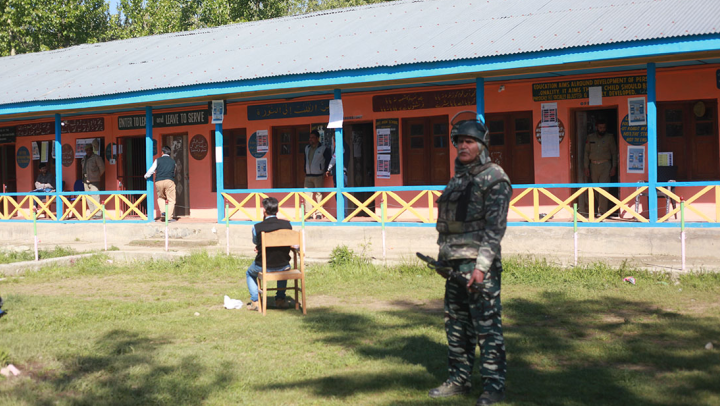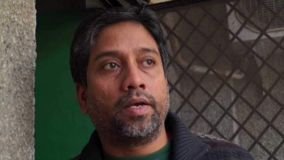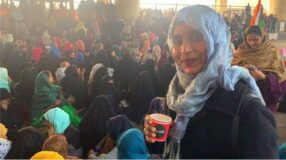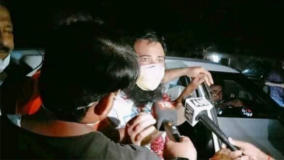
Lok Sabha elections end on a dismal note in Kashmir; Elections staffs ferried out from Shopian in helicopters
The Loksabha elections in Kashmir ended on a dismal note today with a voter percentage of slightly over two percent in the final phase. The poll day was marred by violence and lack of interest from the voters. Majority of the polling booths wore deserted look in twin districts of South Kashmir- Shopian and Pulama- as people preferred to stay away from the polls. Today was the last phase of three-phased polling for the Anantnag Parliamentary seat. Fearing violence, The election commission has announced three-phase polling for Anantnag Parliamentary seat. For the first time in the electoral history of Kashmir, helicopters were used to ferry election staff from the district office to their respective polling stations in Shopian. As per officials, poll officers of at least 24 polling stations along with EVMs were airlifted from District Police Line Shopian and dropped in the zonal office Zainapora. Shopian and Pulwama are spread over six Assembly segments- Tral, Pampore, Pulwama, Rajpora, Wachi, and Shopian.
For the first time in the electoral history of Kashmir, helicopters were used to ferry election staff from the district office to their respective polling stations in Shopian. As per officials, poll officers of at least 24 polling stations along with EVMs were airlifted from District Police Line Shopian and dropped in the zonal office Zainapora. Shopian and Pulwama are spread over six Assembly segments- Tral, Pampore, Pulwama, Rajpora, Wachi, and Shopian. As many as 695 polling stations were established across the districts for the smooth conduct of elections. These south Kashmir districts have 522,530 electors including 271,127 males, 250,735 females, 657 service electors (646 males and 11 females) and 11 transgender voters. Pulwama district has 351,314 electors including 181,259 males, 169,508 females, 541 service electors (533 male and eight female) and six transgender voters. 450 polling stations were set up across the district. Similarly, Shopian district has 171,216 electors including 89,868 males, 81,227 females, 116 service electors (113 male and three female) and five transgender voters. Nearly 245 polling stations were set up across the district.
As many as 695 polling stations were established across the districts for the smooth conduct of elections. These south Kashmir districts have 522,530 electors including 271,127 males, 250,735 females, 657 service electors (646 males and 11 females) and 11 transgender voters. Pulwama district has 351,314 electors including 181,259 males, 169,508 females, 541 service electors (533 male and eight female) and six transgender voters. 450 polling stations were set up across the district. Similarly, Shopian district has 171,216 electors including 89,868 males, 81,227 females, 116 service electors (113 male and three female) and five transgender voters. Nearly 245 polling stations were set up across the district. On Monday morning a few voters were seen casting their votes on the outskirts of three major Towns- Shopian, Pulwama and Pampore. However, the areas falling under the municipal limits and the adjoining areas witnessed complete boycott and only a few votes were cast. Amid heavy deployment of paramilitary forces, people stayed indoors. At several places, protesters blocked the roads by placing wooden logs and then resorted to stone pelting on the forces who responded by using tear gas shells leaving several injured. The worst clashes were seen in commercial centers of Pulwama and Shopian where intense clashes took place. Several protesters received injuries during the clashes.
On Monday morning a few voters were seen casting their votes on the outskirts of three major Towns- Shopian, Pulwama and Pampore. However, the areas falling under the municipal limits and the adjoining areas witnessed complete boycott and only a few votes were cast. Amid heavy deployment of paramilitary forces, people stayed indoors. At several places, protesters blocked the roads by placing wooden logs and then resorted to stone pelting on the forces who responded by using tear gas shells leaving several injured. The worst clashes were seen in commercial centers of Pulwama and Shopian where intense clashes took place. Several protesters received injuries during the clashes. In the afternoon, at least three polling stations were attacked with grenades and petrol bombs. Although no one was hurt, intermittent clashes were on in the area till late evening. The separatists had called for a boycott of the election, just over 2 percent of those eligible had cast their votes by 3 pm, with only an hour left before polling closed. Fearing the violence security forces were put on high alert for the voting day. Majority of the people lacked interest in the polling exercise as they blame successive governments for the killings and bloodshed in Kashmir, “they are all murderers. Hands of everyone are drenched with the blood of our innocent kids. Before elections, they talk big, but change color once elections are over,” a local from the area said.
In the afternoon, at least three polling stations were attacked with grenades and petrol bombs. Although no one was hurt, intermittent clashes were on in the area till late evening. The separatists had called for a boycott of the election, just over 2 percent of those eligible had cast their votes by 3 pm, with only an hour left before polling closed. Fearing the violence security forces were put on high alert for the voting day. Majority of the people lacked interest in the polling exercise as they blame successive governments for the killings and bloodshed in Kashmir, “they are all murderers. Hands of everyone are drenched with the blood of our innocent kids. Before elections, they talk big, but change color once elections are over,” a local from the area said. There are 18 candidates in the fray in this constituency, but the main contest is between Mehbooba Mufti of the People’s Democratic Party (PDP), Ghulam Ahmad Mir of Congress and Justice (Retired) Hasnain Masoodi of the National Conference (NC). BJP has fielded Sofi Yusuf and the People’s Conference (PC), Choudhary Zafar Ali. In addition, there is a lone woman candidate, Ridwana Sanam who is contesting as an Independent.
There are 18 candidates in the fray in this constituency, but the main contest is between Mehbooba Mufti of the People’s Democratic Party (PDP), Ghulam Ahmad Mir of Congress and Justice (Retired) Hasnain Masoodi of the National Conference (NC). BJP has fielded Sofi Yusuf and the People’s Conference (PC), Choudhary Zafar Ali. In addition, there is a lone woman candidate, Ridwana Sanam who is contesting as an Independent. The Joint Resistance Leadership comprising Syed Ali Geelani, Mirwaiz Umar Farooq, and Muhammad Yasin Malik had called for a valley-wide shutdown on April 13 and asked the people to stay away from the elections, stating that the entire the exercise was “futile and a military operation aimed at diluting the core issue of Kashmir.” Roads leading to Pulwama and Shopian wore a deserted look as commercial establishments remained closed while traffic was off the roads. Very thin private transport was seen in other parts of the south Kashmir as well.
The Joint Resistance Leadership comprising Syed Ali Geelani, Mirwaiz Umar Farooq, and Muhammad Yasin Malik had called for a valley-wide shutdown on April 13 and asked the people to stay away from the elections, stating that the entire the exercise was “futile and a military operation aimed at diluting the core issue of Kashmir.” Roads leading to Pulwama and Shopian wore a deserted look as commercial establishments remained closed while traffic was off the roads. Very thin private transport was seen in other parts of the south Kashmir as well.






























